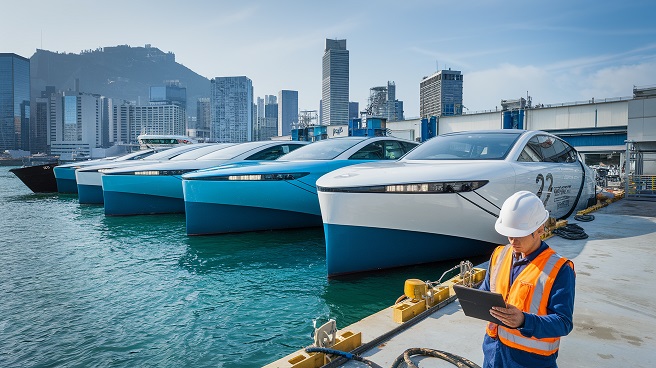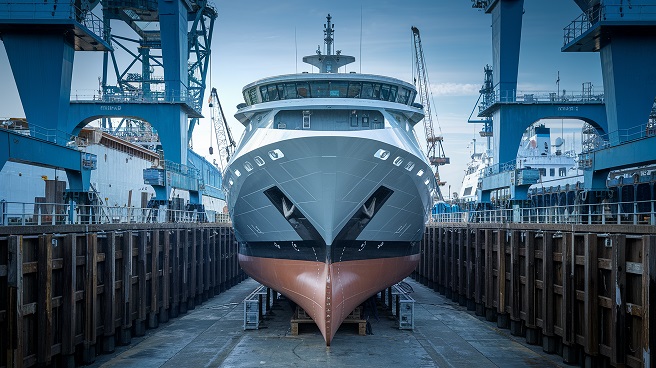The Marine Vessels Market is projected to grow from USD 111.10 billion in 2024 to USD 133.63 billion by 2030, reflecting a CAGR of 3.1%. In terms of fleet volume, the number of active vessels is expected to increase from 61,671 units in 2024 to 70,237 units by 2030. Key drivers of this growth include expanding global trade, military navy modernization, and increasing demand from the tourism and passenger transport sectors. Additionally, ongoing fleet renewal initiatives further strengthen market expansion.
Download PDF Brochure @
https://www.marketsandmarkets.com/pdfdownloadNew.asp?id=74199246
Attractive Opportunities in the Marine Vessels Market
Asia Pacific
The Asia Pacific region remains a critical driver of market growth, with shipbuilding, naval expansion, and investments in sustainable maritime technologies contributing significantly. The region’s market value is expected to reach USD 68.94 billion by 2030, with a CAGR of 1.3%.
Key growth drivers include:
- Expanding global trade and rising demand for commercial ships.
- Military navy modernization and fleet expansion.
- Growth in passenger and tourism-related marine activities.
- Adoption of sustainable technologies in vessel design and propulsion systems.
Market Trends & Dynamics
Driver: Expanding Global Trade Boosting Demand for Marine Vessels
The marine vessels market benefits from the growth in global trade, with approximately 80% of trade volume and 70% of trade value transported via sea. Increased demand for dry bulk carriers, containerships, and tankers reflects the ongoing expansion of international supply chains. The global fleet consists of over 50,000 merchant ships that facilitate trade efficiency and optimize operational costs.
Restraint: High Capital Costs
Shipbuilding requires significant investment due to technological advancements and stringent environmental regulations. Financing remains a challenge, especially for smaller players, restricting competition and innovation. New vessel prices, including VLCCs, Suezmax, and Aframax, have surged by approximately 50% since 2020. Rising second-hand vessel prices and geopolitical uncertainties further elevate cost concerns.
Opportunity: Transition to Sustainable Shipping
A shift towards environmentally sustainable shipping presents significant market opportunities. The adoption of green methanol as an alternative low-emission fuel is gaining traction. Leading logistics and trading companies such as Cargill, ADM, and BUNGE are implementing sustainability initiatives, reinforcing demand for eco-friendly marine vessels. Amazon and Walmart’s sustainability commitments are also driving market momentum for green shipping solutions.
Challenge: Managing Aging Fleet
Aging fleets, particularly in the tanker segment, present maintenance challenges and operational inefficiencies. In 2024, the average age of crude and refined product tankers will reach 13.2 years, the highest in over two decades. Compliance with new IMO regulations, such as EEXI and CII, increases upgrade costs, making vessel replacements a more viable option for many companies. However, supply chain disruptions and limited fleet growth (under 2% in 2024) present challenges to fleet renewal strategies.
Marine Vessels Market Ecosystem
The marine vessels market comprises shipbuilders, component suppliers, vessel operators, and service providers. Shipbuilders focus on construction, while ship operators manage logistics and operations. Regulatory changes, technology advancements, and customer demands influence market dynamics.
Segment Analysis
Military Ships: Frigates to Witness the Fastest Growth
Frigates are expected to record the fastest growth due to their versatility in anti-submarine warfare, convoy protection, and air defense. Compared to destroyers, they offer a cost-effective yet capable naval solution. Modern navies favor frigates for their adaptability and lower operational costs.
Operational Segment: Seafaring to Dominate
Seafaring operations, encompassing cargo, passenger transport, and naval activities, form the largest market segment. The rise in global trade and tourism, alongside increased naval investments, is boosting demand for cargo ships, tankers, and cruise liners.
Regional Insights
Asia Pacific Leading the Market
Asia Pacific is the largest and fastest-growing region for marine vessels. Countries like China, South Korea, and Japan dominate shipbuilding, while nations such as India and Australia are investing heavily in naval upgrades. China’s marine industry has seen rapid expansion, with its shipbuilding order book growing by 50% from 2020 to 2023, increasing its global market share from 50.6% to 58.1%.
- Highest CAGR Market by 2030: China
- Fastest-Growing Market in Asia Pacific: China
Recent Developments
- December 2024: Samsung Heavy Industries secured a contract to build two very large ethane carriers for an Asian shipping company, set for delivery by December 2027.
- September 2024: Huntington Ingalls Industries received a USD 9.6 billion contract to build three San Antonio-class amphibious ships.
- August 2024: Mitsubishi Heavy Industries secured a contract to construct an Aegis System Equipped Vessel (ASEV) for Japan’s navy.
- June 2024: Hanwha Systems acquired Philly Shipyard (US) for USD 100 million.
Key Market Players
- China State Shipbuilding Corporation (China)
- FINCANTIERI S.p.A. (Italy)
- Huntington Ingalls Industries (US)
- HD Hyundai Heavy Industries Co., Ltd. (South Korea)
- Hanwha Ocean Co., Ltd. (South Korea)
- Samsung Heavy Industries Co., Ltd (South Korea)
- MITSUBISHI HEAVY INDUSTRIES, LTD. (Japan)
- Naval Group (France)
- Austal (Australia)
- Mazagon Dock Shipbuilders Limited (India)
Ask for Sample Report @
https://www.marketsandmarkets.com/requestsampleNew.asp?id=74199246
The marine vessels market is poised for steady growth, driven by rising global trade, naval modernization, and the transition to sustainable shipping. Asia Pacific remains the dominant market, while innovations in propulsion and fleet management continue to shape the industry’s future. Despite challenges such as high capital costs and aging fleets, market opportunities in green shipping and military expansions present strong growth potential.


